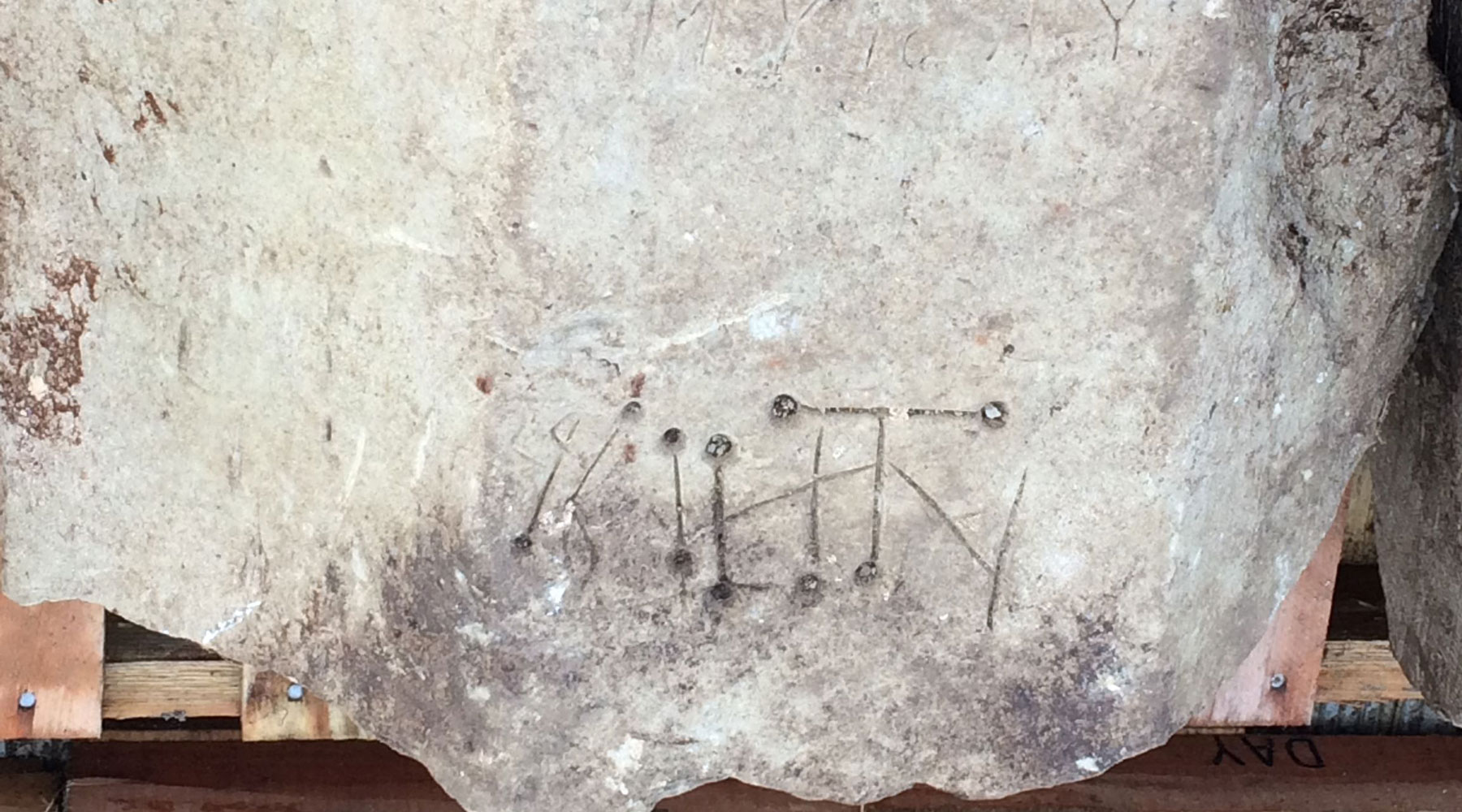Marks carved into the wall of a medieval church that were thought to deter evil spirits have been found along the path of the HS2 railway.
The ruin of St Mary’s church is the sole survivor of the abandoned original village of Stoke Mandeville, just to the south of the current town, and sits in the middle of an empty field. The old church was built to serve the manor house and was located some way from the village centre. It was replaced in 1866 by a new church built closer to the village. The old church was torn down in the 1960s as it had become unsafe.
It also happens to be right in the middle of where the HS2 railway will run as it heads out of north-west London, so archaeologists have been excavating the site.
And on this holy site, they found witches marks – to ward off evil.
Two stones with a centrally drilled hole from which a series of lines radiate in a circle have been uncovered at the site of St Mary’s. Historians consider these markings to be ‘witches’ marks, created to ward off evil spirits by entrapping them in an endless line or maze.
There are a number of these across Britain both in churches as well as houses and sometimes even on furniture.
However, they can also be interpreted as early sundials, used by the church to divide up the day into morning prayer, midday prayer and evening prayer. These ‘scratch dials’ as they are known, are usually found close to the southern door of the church as it is a position better suited for a sundial.
At St Mary’s, one of the markings was too close to the ground and wrongly positioned to be a sundial, so either the stone was reused from another church — or it’s witch’s marks to ward off evil spirits.
Archaeologists from Fusion JV were also given the rare opportunity to excavate and carefully deconstruct the remains of the medieval church – something that has not been done in Britain since the 1970s.
Though it was known that the church had been demolished, the method and extent of demolition had not been recorded and it was, therefore, a surprise to the archaeologists to discover, that beneath the rubble the church survived to a height of almost five feet, with floors intact.
Research into the structure of the church has allowed archaeologists to piece together a history of the development of St Mary’s. The church started off as a chapel built in about 1070, shortly after the Norman Conquest and may have been at first the private chapel belonging to the lord of the manor at that time. The church was soon extended, and an aisle added in the 1340s. These new additions seem to mark a transition from a chapel used for private prayer to a church that was used by the local villagers.
Work to dismantle and excavate the church will continue into next year and archaeologists are hoping to discover if there are the remains of a Saxon church beneath its floor.










